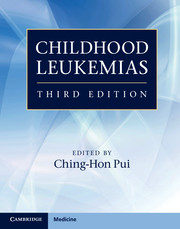Book contents
- Frontmatter
- Contents
- List of contributors
- Preface
- Section 1 History and general issues
- 1 History of leukemia: historical perspectives
- 2 Diagnosis and classification
- 3 Epidemiology and etiology
- Section 2 Cell biology and pathobiology
- Section 3 Evaluation and treatment
- Section 4 Complications and supportive care
- Index
- Plate Section
- References
1 - History of leukemia: historical perspectives
from Section 1 - History and general issues
Published online by Cambridge University Press: 05 April 2013
- Frontmatter
- Contents
- List of contributors
- Preface
- Section 1 History and general issues
- 1 History of leukemia: historical perspectives
- 2 Diagnosis and classification
- 3 Epidemiology and etiology
- Section 2 Cell biology and pathobiology
- Section 3 Evaluation and treatment
- Section 4 Complications and supportive care
- Index
- Plate Section
- References
Summary
Introduction
The best way to study variable human disease in variable human beings is to study variable human disease in variable human beings.
Philip Schein and Barbara Scheffler (paraphrase)The last half century has witnessed striking progress in the treatment of childhood leukemia, largely by empiric manipulation of a rather limited chemotherapeutic armamentarium through well-designed clinical studies. Approximately 50 years ago, the first attempts to cure this dread disease were dismissed as futile and even cruel in providing unrealistic hopes to desperate families. However, improved supportive care has allowed patients to survive through periods of perilous pancytopenia, induced by the disease and its treatment, and cure has become routine, albeit not universal, in economically privileged countries. Outcomes remain poor for relapsed patients and for those in economically underprivileged countries where treatment may not be accessible.
Appreciation of the biology of leukemia has advanced from clinical descriptions, through cytomorphology and histochemistry, to molecular genetics. The pace has quickened perceptively since the start of the twenty-first century. Genetic studies, at first focused on the single most visually obvious chromosomal abnormality by karyotype, are now expanded to genome-wide analyses and beyond genomics to epigenomics. We are moving from a descriptive catalogue of genetic abnormalities to an appreciation of cooperating functional aberrations affecting differentiation, apoptosis, and proliferation. We not only divide leukemia into major clinical/cytomorphologic subsets such as acute and chronic, lymphoid and myeloid but also recognize the tremendous heterogeneity within each subset. Patients sharing a genetic abnormality, such as t(1;19), may have differing associated abnormalities. Emerging evidence demonstrates oligo-clonality and the consequences of clonal evolution. Some investigators feel that the limits of indiscriminate intensification of therapy have been reached. However, improved event-free survival with intensified anthracycline treatment in acute myeloid leukemia (AML) and with “augmented” postinduction intensification in acute lymphoblastic leukemia (ALL) suggests that our bag of tricks is not yet completely empty. Recent clinical advances in Philadelphia chromosome-positive ALL and chronic myelogenous leukemia (CML) hint at the thrilling promise of coming decades.
- Type
- Chapter
- Information
- Childhood Leukemias , pp. 1 - 20Publisher: Cambridge University PressPrint publication year: 2012
References
- 3
- Cited by



